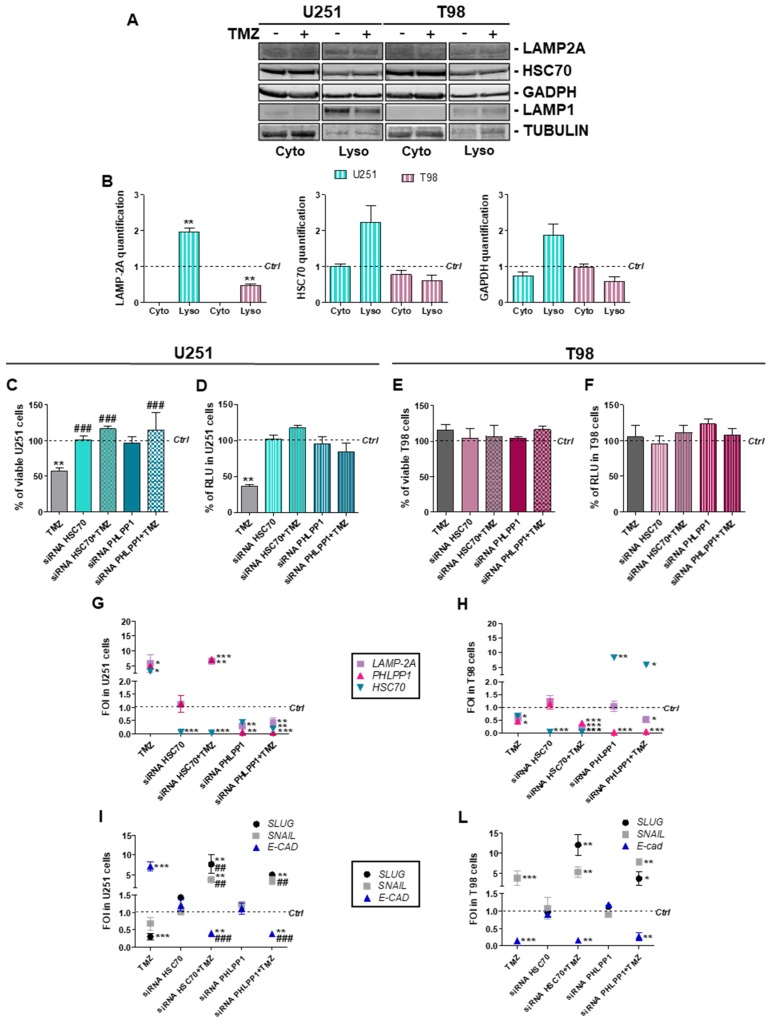Figure 3.
Essential chaperone-mediated-autophagy related gene involvement in Temozolomide response in U251 and T98 cells. (A) Western blot analysis of LAMP2A, HSC70 and GAPDH protein levels in subcellular fractions (Cyto = cytosolic fraction; Lyso = Lysosomal fraction) obtained from untreated (−) and Temozolomide (TMZ) treated (+) U251 and T98 cell lines. (B) Protein signals were normalized for the respective fraction marker: TUBULIN (cytosol) and LAMP1 (lysosomes). Histograms show the distribution of target proteins in the fractions compared to untreated control levels. ** p < 0.01 treated vs. control cells. Lysosomal content of the three considered proteins are significantly different in U251 compared to T98 cells (LAMP2A p = 0.003; HSC70 p = 0.04; Glyceraldehyde 3-phosphate dehydrogenase (GAPDH) p = 0.03). (C) Viability analysis and (D) assessment of HIF-1α activity in U251 and in (E,F) T98 cells after PHLPP1 or HSC70 silencing ± 100 µM TMZ treatment. Data were expressed as percentage of viable cells and as RLU, as previously described. ** p < 0.01 treated vs. control cells; ### p < 0.001 vs. TMZ-treated cells. (G) Gene expression profile for CMA-related genes (LAMP2A, HSC70, PHLPP1) in U251 and (H) T98 cells. (I) Gene expression profile for EMT-related genes (SLUG, SNAIL, E-CAD) in U251 and (L) T98 cells. Gene expression was analyzed by means of Real-time PCR. All data were normalized for β-ACTIN, and the ΔΔCt values were expressed as FOI of the ratio between treated and control cells. * p < 0.05; ** p < 0.01; *** p < 0.001 treated vs. control cells; ## p < 0.01, ### p < 0.001, vs. TMZ-treated cells. Mean values ± SD of three independent experiments.

